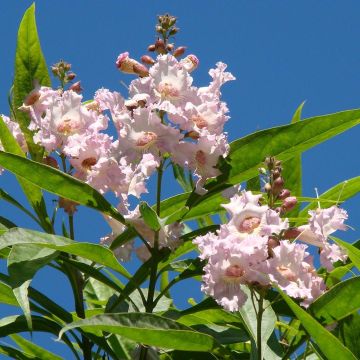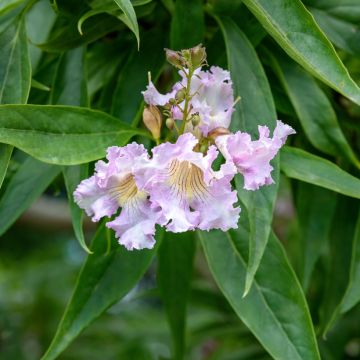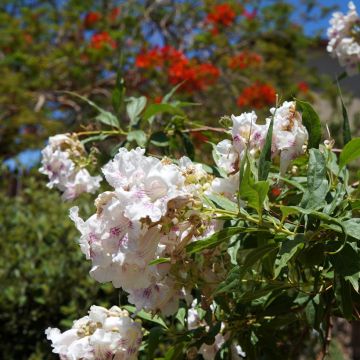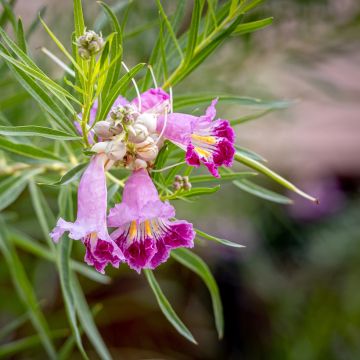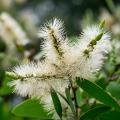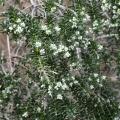Chitalpa and Chilopsis
Would this plant suit my garden? Set up your Plantfit profile →
Available in 1 sizes
Available in 1 sizes
Available in 1 sizes
Available in 1 sizes
Available in 2 sizes
Our range of Deciduous Chitalpa and Chilopsis, remarkable small trees known for their spectacular flowering and drought resistance. Chitalpa tashkentensis, resulting from the cross-breeding between Chilopsis linearis (Desert Willow) and Catalpa bignonioides, offers delicately scented trumpet-shaped flowers throughout the summer. Among them, the 'Pink Dawn' Chitalpa stands out with its candy pink flowers that attract butterflies and bees. Chilopsis linearis is adorned with orchid-like, slightly scented flowers. Its variety 'Burgundy' is appreciated for its deep red flowers, while 'Lucretia Hamilton' captivates with its deep violet flowers. The 'Morning Cloud' Chitalpa offers bright white flowers, clearly visible against its fine dark green foliage.
Chitalpa and Chilopsis are ornamental small trees that generally reach a height of 4 to 6 m and a spread of 3 to 5 m. Their habit is often spreading and rounded, making them interesting specimens for small gardens. The foliage of Chilopsis is linear and resembles that of the willow, with a fine texture. Chitalpa has broader foliage and a slightly fuzzy texture.
Cold-resistant Chitalpa and Chilopsis thrive in full sun and require well-drained soil. They tolerate drought once established and require very little maintenance. Discover them on these pages.
Haven't found what you were looking for?































